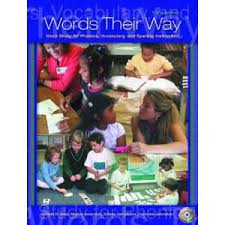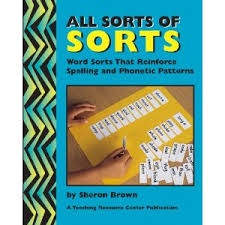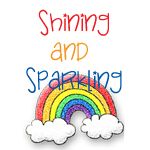Hi, Friends!
My post today is all about Differentiated Word Study. It's long but if you have been thinking about starting this in your classroom and are stumped as how to begin, I hope this post will help you get started.
I had been wanting to begin differentiating spelling for a few years now because I was tired of the same results every week on the spelling tests. My low students failed, my middle students missed a couple and my high students or visual learners scored a 100 percent.There was never any transfer either. They had it one week but it was gone the next. However, I never knew where to start differentiating word study, how to manage it, or how to communicate with parents.

Even though I had no clue what I was doing, I decided to just jump in with both feet this year. I like doing that for some reason.. creating more stress for myself. I think I have some issues...
Anyway, I had given the Words Their Way Inventory at the beginning of the year and most of my students all needed the same skills. I started the year focusing on the same short vowel word families whole group and then moved into CVCe families after that. I used word sorts frequently but everyone always had the same words. Once the students had this base instruction and I could see some students were stalling and some were taking off, I gave the Words Their Way Spelling Inventory again in November.
Step 1: Assess and Group Students
After the second Words Their Way Inventory, I found that my students were falling into 3 groups.
4 still needed blends, 10 needed more practice with CVC vs. CVCe and my other 15 were ready to move on to long vowel teams.
Step 2: Begin to Develop an Implementation Plan
Even though I now had the data I needed, I still didn't know how I would even begin to manage this in my classroom. How would I organize materials? How would I assess? Could I keep up with it long term? I began to scour the internet for information. I found blogposts from teachers who were using Words Their Way or differentiating word study. I found some great articles as well. Here are some you can check out if you're interested:
Mrs. T's Class
Reading Rockets Article that defines Word Study for parents
Reading Rockets-Word Study
Scholastic Post by Beth Newingham
Teaching Resource Center
After researching and thinking about my own classroom, I began to develop my own Differentiated Word Study Implementation plan.
Click here to download my implementation plan.
Step 3: Make Word Study Group Posters and Envelopes.
I made these black and white polka dot posters so students would know their groups. I named my groups: Stellar Spellers, Super Sorters and Word Wizards. I also circled pairs of students and these became their "Word Study Buddy".

I laminated 6 x 9 manila envelopes for students to keep their words in. I still find random words on the floor but it works pretty well.
Step 4: Train Students in Routines

When I first introduced the new routines stated in my implementation plan to my students, I started with a word sort that everyone could be successful with. I made my own word sort because I wanted to specifically focus on -ar word families and I wanted blank category cards. If you don't want to be making your own word sorts each week, Words Their Way has plenty of sorts and I have the book, All Sorts of Sorts, that I use all the time. It has actually fallen apart because my team and I have used it so much!
Here are my routines for the week:
On Mondays, for morning work, each student will get his or her
word sort for the week in the small manila envelope which will be kept in book
box.
1 1. He or she
will color the back of their word sort 1 color in case a card is accidently
dropped on the floor.
2 2. He or she
will cut the word sort apart.
 3 3. He or she
will try to figure out the word patterns he or she will practice for the week. ( Blind Sort)
3 3. He or she
will try to figure out the word patterns he or she will practice for the week. ( Blind Sort)
4 4. He or she
will fill in the category cards.
5 5. He or she
will read all the words in his or her sort.
Tuesdays- Each student will re-sort and write the words in his or
her word study notebook ( spiral notebooks cut in half) and read. You can turn this into a speed sort where students have to beat the timer. They love that and work so fast!
Wednesdays- Each student their word study buddy a blind writing sort. I call this "Be the Teacher" and my students love it! I love it too because it keeps them engaged for so long! They take it so seriously. See how they have put up dividers to keep their buddy from looking. Too cute!
Thursdays- Word Hunt in books or decodable passages for their word
pattern, record and read.
Friday- Students will create sentences using their word pattern
words.
Step 5: Communicate with Parents
I sent an initial letter to parents explaining our new spelling. I included the article from Reading Rockets with it. No one has questioned me or seemed upset that their child does not have traditional spelling words. Now I just include what pattern or skill each group is working on in the homework.
Step 6: Assessment
I test each of my 3 groups separately. Rather than wasting 30 min on a spelling test each Friday, I take 15 minutes, anytime I want, to give a dictated sentence or an isolated word list to see if that group has mastered the skill we have been studying.
Is there anything I missed? Do you use Differentiated Word Study in your class? If so, what has worked for you? Please tell me!!! :)



















.JPG)















.jpg)

.jpg)
.jpg)
.jpg)
